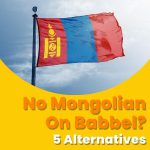Ever wondered about magkatugmang salita or rhyming words in Tagalog? If you’re into poetry or songwriting, or even if you’re just curious about learning something new, this is for you! Today, we’ll talk about Tagalog rhymes. You’ll see how they can add a unique touch to your creative expression.
Why Tagalog rhyming words, you ask? Tagalog, a primary language in the Philippines, is the foundation of the Filipino language. So, understanding Tagalog rhymes can help you appreciate the language. Here, we’ll discuss Tagalog rhyming words and their differences from English rhymes. You’ll learn examples of rhyming words and phrases for various contexts.
What Are Rhyming Words In Tagalog?
Rhyming words in Tagalog or magkatugmang salita, are terms that have similar sounds at the end. Just like in English, these words can create a pleasing effect when used in poetry, songs, or other creative works.
For instance, take the words patis (fish sauce) and pawis (sweat) – they both end with the “-is” sound, making them rhyming words.
How Tagalog Rhymes Differ From English Rhymes
In English, rhymes often focus on similar vowel sounds. However, in Tagalog, it’s more about the entire syllable or even the consonant sounds.
For example, in English, the words “cat” and “hat” rhyme due to the similar vowel and ending sounds.
In Filipino, the words kamay (hand) and kaway (wave) rhyme because the final letters -may and -way share a similar pattern.
Importance Of Pronunciation And Stress In Tagalog Rhymes
Tagalog has specific rules for stress placement. This can change the meaning of a word. For example, puno (full) and punò (leader/head) have different meanings due to the stress placement.
When using Tagalog rhyming words, ensure the stress is accurate to maintain the intended meaning and sound. This attention to pronunciation and stress can make your Tagalog rhymes more engaging and authentic.

Identifying Rhyming Patterns In Tagalog
Now it’s time to identify some rhyming patterns. Don’t worry; it’s not as complicated as you might think. In fact, you can learn more Tagalog in an easy, fun, and effective way through the Ling app. It’s one of the best language-learning apps available on Google Play and the App Store!
Common Word Endings That Rhyme
In Tagalog, many words share similar endings, making it easier to spot Filipino rhyming words. These common word endings can be a goldmine for creating catchy rhymes.
For example, words ending in -an are pretty common, like kainan (eatery) and tindahan (store). Notice how the -an ending creates a natural rhyme between these two words?
Watch out for other shared endings like -in, -on, and -ay to discover even more rhyming possibilities!
Rhyming Syllables And Consonant Sounds
So, what if the word endings aren’t the same? You can still find rhymes by focusing on similar syllables or consonant sounds. Remember, Tagalog rhymes don’t always rely on vowel sounds like English rhymes.
Instead, focus on the entire syllable or even the consonant sounds. For example, the words kamatis (tomato) and sibuyas (onion) don’t have the same endings, right?
Sure, but they share similar consonant sounds like -m– and -s-. So yes, they can still create a pleasing rhyme when used together.
Examples Of Rhyming Words In Filipino
Alright, let’s check out some real examples! After all, what better way to understand the concept than by seeing it in action?
Sets Of Filipino Rhyming Words
- Ganda (beauty) and tanda (age) – These words rhyme because they both have the -anda ending.
- Pagkain (food) and lakarin (to walk) – The -in ending creates a rhyme between these two words.
- Kanta (song) and kwenta (compute) – These words rhyme because of the -anta and -enta endings.
Examples Of Rhyming Phrases In Tagalog
- Mabilis na paglalakbay, masarap na buhay. (Fast travel, good life) – The -ay endings create a rhyme in this phrase.
- Matamis na atis, malinis na batis. (Sweet sugar-apple, clean stream) – The -is and endings contribute to the rhyme in this example.
- Malayo sa nguso, malapit sa puso. (Far from the lips, close to the heart) – The -o endings create a rhyme in this phrase, making it more memorable.
Using Rhyming Words In Various Contexts
- Poetry: Sa init ng araw, pawis ay tumutulo, sa lilim ng puno, pahinga ay natatamo. (In the heat of the sun, sweat drips down, under the shade of a tree, rest is achieved.) – This example showcases the use of rhyming words in a Tagalog poem.
- Everyday conversation: Ang mabuting kaibigan, sa hirap at ginhawa, ay laging nariyan. (A good friend, in hardship and ease, is always there.) – This sentence demonstrates how Tagalog rhyming words can add a pleasant sound to casual conversations.
- Advertising slogan: Mabilis na serbisyo, walang perwisyo. (Fast service, no harm.) – This example shows how rhyming words in Tagalog can create a catchy and appealing advertising slogan.
More Tagalog Rhyming Words
Looking for more Tagalog rhyming words? Here are ten more examples that you can use.
Traditional Tagalog Poetry Forms And Rhymes
Now that we’ve understood rhyming words in Tagalog, it’s time to learn the traditional Tagalog poetry forms and their rhymes. So, how do these ancient forms of poetry use rhyming words? Well, let’s find out together!
Tanaga (Quatrain)
The Tanaga is a traditional Filipino poetic form composed of four lines with seven syllables each. The rhyme scheme in a Tanaga is AABB. This means the first line and second line rhyme with each other. The third and fourth lines also rhyme.
Here’s an example to help you visualize the structure and rhyme scheme of a Tanaga:
“Ang bulaklak ay laging sariwa, (The flowers are always fresh,)
Sa hardin ng buhay, tayo’y magsaya. (In the garden of life, let’s be happy.)
Ang araw sa umaga, gumigising na, (The sun in the morning, waking up,)
Puso ng tao’y sumasaya na. (People’s hearts are happier.)”
Dalit (Can Be Loosely Translated To “Hymn”)
The Dalit is another traditional Filipino poetic form, usually composed of four octosyllabic lines. The rhyme scheme of a Dalit is typically AAAA, which means all four lines rhyme with each other.
Let’s look at an example to better understand the structure and rhyme scheme of a Dalit:
“Galíng nang magandang ginto (Excellent like a beautiful gold),
Walang tumbagang kahalo (No mixture of copper),
Maikatlo mang ibubo (Even if poured three times)
Di gumitang nang pagpalò (It does not lose its luster.)”
Awit (Song Or Ballad)
The Awit is also a form of traditional Filipino poetry, characterized by alternating 12 and 14-syllable lines. The rhyme scheme of an Awit is AABB, just like the Tanaga. Here’s an example to illustrate the structure and rhyme scheme of an Awit:
“Pasko na naman, O kay tulin ng araw (It’s Christmas again, oh how swift the day)
Paskong nagdaan tila ba kung kailan lang (Last Christmas seems like it was just yesterday)
Ngayon ay Pasko, dapat pasalamatan (Now it’s Christmas, we should be thankful)
Ngayon ay Pasko, tayo ay mag-awitan (Now it’s Christmas, let’s sing together)”

4 Tips For Creating Rhyming Content In Tagalog
When crafting Tagalog rhyming content, you might find it a bit challenging at first. But hey, who said learning couldn’t be fun, right?
Here are some tips on making your Tagalog rhyming content engaging and enjoyable.
1. Expand Your Vocabulary
To create rhyming content, it’s essential to expand your Tagalog vocabulary. The more words you know, the more options you have.
You can start by learning new words every day and understanding their meanings. For example, ligaya (joy) and saya (happiness) can create a rhyme in your writing.
2. Choose Appropriate Rhyme Schemes
Choosing the proper rhyme scheme can make or break your content. Not all poems or songs should rhyme. Pick a rhyme scheme that complements your message to create a smooth flow.
For instance, if you’re writing a lighthearted poem, AABB or ABAB schemes can work well. Remember, consistency is key!
3. Balance Rhyming Words
While Tagalog rhyming words can make your content catchy, ensuring your message is meaningful and engaging is equally important. Rhyming alone is not enough. There should be substance in what you say.
For example, if you’re writing about love, you can use harana (serenade) and tadhana (destiny) to create a rhyme. But remember, always convey the emotions and feelings behind these Tagalog words.
4. Ensure Correct Pronunciation And Stress In Your Writing
Lastly, proper Tagalog pronunciation and stress are crucial. Each word should have the correct pronunciation and stress.
For example, mahal can mean either “love” or “expensive,” depending on the context and stress placement. Be mindful of this when choosing Tagalog rhyming words to avoid confusion.
Tagalog Rhyming Words: Wrap Up
So, we’ve learned Tagalog rhyming words or magkatugmang salita. These Tagalog rhymes are fun and a great way to get the hang of how Tagalog sounds and feels.
When you use them, you’re expanding your vocabulary while getting a feel for the rhythm of the language. This makes picking up Tagalog easier and a lot more enjoyable. Keep playing with these rhymes, and you’ll notice yourself talking like a real Filipino with a bit of extra flair!



































































